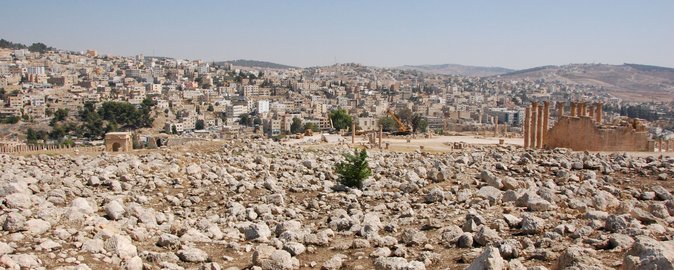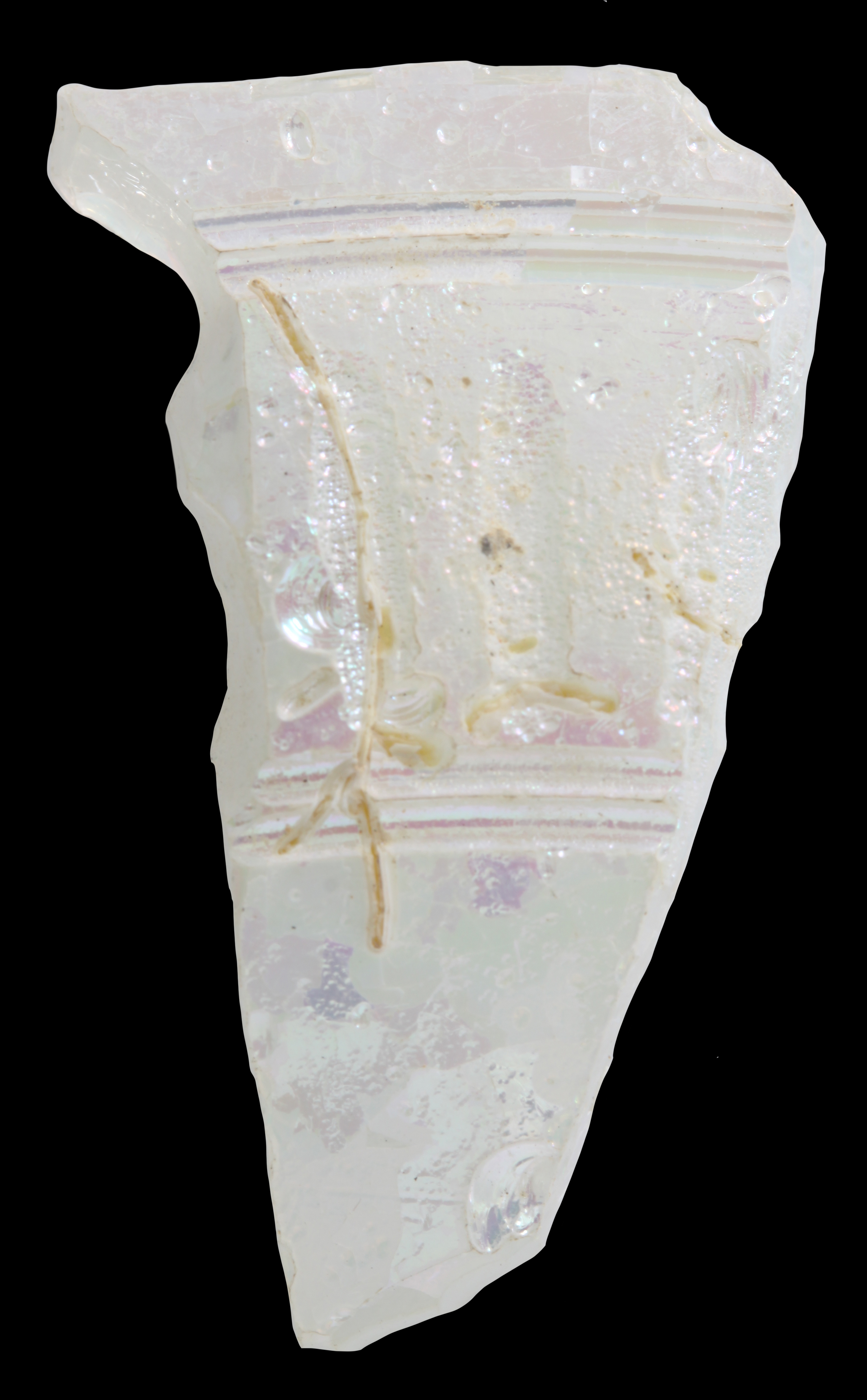When high-definition archaeology pays off: The case of Roman glass from Jerash
The origin of Roman glass can be determined through hafnium isotopes. An International collaboration study was published on this last month, and at the root of the study is the Roman glass from the excavations in Jerash run by the Danish-German Jerash Northwest Quarter Project. The new study underlines the possibilities and potential of high-definition approaches in archaeological excavation projects.


The Hellenistic and Roman city of Gerasa (modern Jerash in northern Jordan) was one of the great Greco-Roman cities of the Decapolis on the eastern frontier of the Roman Empire. Ancient Gerasa flourished until a devastating earthquake in the mid-eighth century CE led to its abandonment. Archaeological evidence indicates it was settled once again in the later Ayyubid–Mamluk period. Although the urban expansion of modern Jerash has challenged archaeological investigation of the ancient city, Gerasa/Jerash is still Jordan’s second most visited tourist destination thanks to its extensive and beautiful site.
Since 2011, Professor Achim Lichtenberger (Westfälische Wilhelms-Universität Münster) and Centre Director of UrbNet Professor Rubina Raja have directed the Danish-German Jerash Northwest Quarter Project. The project conducted excavation campaigns between 2011 and 2017 in the northwest quarter of the archaeological site of ancient Gerasa. Meticulously registering all excavated material, the project has used full-quantification methods to accumulate datasets and samples for analyses. By approaching small-scale case studies in a high-definition perspective, the project has continuously gained new knowledge and developed new methods for further studies, which has been widely published. The latest example is the study of the origin of Roman glass found in Jerash.
The origin of Roman colourless glass
The production of large quantities of a colourless and clear glass is a particularly fascinating aspect of Roman glass production. The colourless and clear glass was favoured for high-quality cut drinking vessels. The fourth-century Price Edict of the emperor Diocletian refers to colourless glass as ‘Alexandrian’, indicating an origin in Egypt. However, archaeological evidence of colourless glass production is mainly know from elsewhere: large amounts of Roman glass were made in Palestine, where archaeologists have uncovered furnaces for colourless glass production. Such furnaces have not been uncovered in Egypt, and hitherto, it has been very challenging to scientifically tell the difference between glass made in the two regions.
In the new international collaboration study involving the Danish-German Jerash Northwest Quarter Project, UrbNet, AGiR and glass expert Professor Ian Freestone from University College London, researchers have found a way to determine the origin of Roman colourless glass. Assistant Professor Gry Barfod led the collaboration study, which was recently published in Scientific Reports. The results of the analyses of the Roman glass from Jerash show that the isotopes of the rare element hafnium can be used to distinguish between Egyptian and Palestinian glass. The analyses provide compelling evidence that the prestigious colourless glass known as ‘Alexandrian’ was indeed made in Egypt.
Ground-breaking results
Hafnium isotopes have not previously been used by archaeologists to look at the trade in ancient man-made materials such as ceramics and glass. Therefore, the new study and its results have received international media coverage and been widely circulated in archaeological and scientific forums online in the past month.
The ground-breaking results will have a massive effect on scientific analyses of archaeological material such as glass. Furthermore, the new study demonstrates the potentials of high-definition archaeology: Applied to archaeological questions, high-definition methods not only provide us with a better understanding of one specific material from a given site – in this case Jerash – but can in fact pave the way for scientific breakthroughs in the wider field of archaeology.
Publication
Barfod, G. H., Freestone, I., Lesher, C. E., Lichtenberger, A. & Raja, R. (2020). ‘Alexandrian’ Glass Confirmed by Hafnium Isotopes. Nature Scientific Reports 10, 11322.
The study is an international collaboration between archaeologists and geologists. It is funded by the Carlsberg Foundation, the Danish National Research Foundation under Grant DNRF119 (Centre of Excellence for Urban Network Evolutions (UrbNet)) and Grant 26-123/8 (Niels Bohr Professorship in Geoscience), the Deutsche Forschungsgemeinschaft, Deutscher Palästina-Verein, the EliteForsk initiative of the Danish Ministry of Higher Education and Science and H. P. Hjerl Hansens Mindefondet for Dansk Palæstina-forskning.
Find out more:
The Danish-German Jerash Northwest Quarter Project
Centre for Urban Network Evolutions (UrbNet)
Aarhus Geochemistry and Isotope Research Platform (AGiR)
Also see news about the study on UrbNet's website here.
For a full overview of the media coverage and circulation of the new results, see here and here.
